The tides of war have rolled in from the east and are now upon us. A new globe trotter has washed up on American shores to challenge BMW’s 1200 GS, and perhaps stir it from its comfortable position as uncontested leader of the big displacement adventure bike category. It’s all good news for riders though. If you’re looking for a comfortable touring machine that can put oodles of paved highway miles underfoot, then blast through dirt roads with relative agility, Yamaha’s 2012 Super Ténéré is a viable option. That’s the impression I had after riding Big Blue’s new beast for two days and more than 265 miles through the desert surrounding Sodona, Arizona. Although MD tested the Super Ténéré at the European launch earlier this year, we wanted a new perspective on American soil of the bike eagerly anticipated by many U.S. consumers.
After a short flight from Los Angeles to Prescott Valley, Arizona, a squeaky clean Ténéré was waiting for me in the airport parking lot. It wouldn’t stay that way for long though. The other seven riders and I lit up the engines, and got right down to it, the dirt that is. The first thing that struck me once the pavement ended was how at home the motorcycle felt on firmly packed dirt. Standing on the pegs, swinging the handlebars from side to side and counterbalancing this beast felt surprisingly natural. In no time at all we were flying at 55 mph, raising a storm of fine, red Arizona dust behind us, and taking on broadly sweeping dirt corners with confidence as we made our way to Sedona.
The rumors are true. The Ténéré has an exceptionally low center of gravity, good weight distribution, and a confidence inspiring, agile feel in the dirt. Its 575 pounds of wet weight are very well situated, thanks to some unique engineering choices: the radiator has been placed under the left fairing, and the battery and electronics under the right, so that the inline, two-cylinder engine could be placed further forward, allowing for a shorter wheelbase. That engine also sports a dry sump, doing away with a large oil pan, and allowing for the engine to be mounted lower in the chassis. Also, the 6.1 gallon gas tank looks wide up top, but is actually quite shallow at its upper regions; most of the fuel is kept down low. All this translates into a bike that feels easy to balance—a great asset on the dirt— and has an almost neutral weight distribution, with 50.5 percent of the bike’s poundage carried ahead of the midway point between the two axles, and 49.5 percent behind it.
The bike’s suspension handled the rough stuff very well, adding to the motorcycle’s off-highway mettle. The road we stormed through that first day was riddled with embedded rocks, and the front forks ate up those sharp two to three inch jagged edges in stride, without transmitting any sudden jolts through the bars. The front end felt very stable, the traditional forks very predictable, and not overly stiff as is the case with some other adventure type bikes. This kept the ride comfortable, and the front wheel nicely planted.
With 7.5 inches of travel up front, and the same amount out back, the suspension offers plenty of movement to take on your average rocky, dirt roads. I never once bottomed out. Now, if you have your heart set on battling more gruesome rocks—like the ones I’ll tell you about later—a little more suspension would be nice, though the bike’s weight precludes riders from engaging in such behavior for too long anyway.
The inverted 43 mm front forks are adjustable for compression, rebound, and pre-load. Another surprising benefit is that adjusting the compression on the front forks actually yielded noticeable and beneficial results. The rear shock, with adjustable rebound damping and preload, also had great feel in the dirt—not overly stiff, and not overly soft. Also, preload for the rear shock can be adjusted quickly, and without tools, via a handy-dandy knob, so accommodating heavy loads or passengers is simple.
Perhaps the bike’s biggest drawback on the dirt happens to be one of its strongest assets on the street: the standard ABS system that cannot be switched off. On the road, the system proved to be remarkable and operated rather invisibly. Grabbing a heavier dollop than usual of front brake would grind the Ténéré to a halt in no time, and without any pulsating sensation at the lever. Those dual 310 mm floating rotors and 4 piston calipers work well. The linked braking system, which automatically applies rear brake when the rider squeezes the front brake, operated rather undetectably as well. In fact, I didn’t notice it at all. That system can be overridden by pushing the rear brake first, in which case both brakes operate independently.
When I crunched down on the rear brake, only a very slight pulsating sensation was noticeable as the ABS prevented the single piston caliper from locking the rear wheel. On the pavement, these brakes will surely save lives, and will give confidence to riders like me who get a little queasy when clamping down hard on the right lever.
On the dirt, having ABS out front is great too, and will surely save many from the occasional wash out, but not being able to lock up the rear does lengthen braking distances. As someone who learned to ride in the dirt, for me locking the rear tire is standard protocol, and something that just plain feels right when stopping is of the essence. A switch that allows riders to disconnect ABS to the rear wheel only would be a good addition to the Ténéré. Overall though, the system worked well enough on the dirt.
The 2012 version of the Ténéré was totally reengineered from the ground up, and though this one wasn’t designed to win the Paris Dakar, as its older brethren have done 6 times in the past, Yamaha still went heavy on the performance side.
The engine is completely new. It’s an 1199 cc, liquid-cooled, parallel 2-cylinder power house with two spark plugs and four valves per cylinder. It sports double- overhead camshafts and a 270 degree crank with an uneven firing sequence. The motor delivers a thumper-type feel with a bit of an edge, and a nice exhaust note. Twin axis balancers keep vibration down, yet allow for the charming pulse of the engine to come through.
The engine is very strong, but in no way wild, and delivers lots of usable power throughout its rev range. The European versions we tested cranked out 108 horses at 7,250 rpm, and 84 ft/lbs of torque at 6,000 rpm. The American versions will be equipped with a USFS approved spark arrestor, so those figures may end up a little lower for us.
What’s really notable is its outstanding torque, robust bottom end, and unique personality. When you pin down the throttle it gets going pretty quickly, but the acceleration isn’t mouth-watering, so those looking for a sportier bike may want to look elsewhere. Overall, all the riders in our group were pleased with the engine; it does its job well.
The bike’s smooth, wide ratio, six- speed transmission compliments the engine perfectly. On the dirt, it hardly matters what gear you’re in. Just apply a little throttle, and the torquey engine is more than happy to grant your request and chug you through that low speed turn. Out on the highway, shifting is mostly optional as well, and by the way, this thing flies down the road. With the motorcycle in sixth gear— a true over-drive— the Ténéré cruises comfortably at 90 miles per hour, with the analog tachometer indicating a meager 4,500 rpm. The bike is also very stable at speed, so cruising at supra-legal velocities is not a problem, and passing vehicles on two lane highways is a cinch. Jamming through the twisties is a blast too, as the same features that give it great off road agility also pay off on those fun mountain roads—leaning the Ténéré almost until the side bags touch is great fun.
The Ténéré also comes standard with Yamaha’s fly-by-wire chip controlled throttle technology, as well as Yamaha’s switchable “D-Mode” engine mapping, which allows riders to select from two different engine settings: T-Mode, which would be useful under wet conditions, or when you’re just mentally exhausted at the tail end of a 600 mile day, and S-Mode, which gives you throttle response that is a little zestier. These engine settings can be switched on the fly by releasing the throttle and hitting a thumb switch located on the right handle bar control pod. That said, there doesn’t seem to be a very noticeable difference between the two settings, and I ended up using S-Mode about 85 percent of the time.
On the second day, we set off to the east of Sedona, the towering sandstone plateaus in the distance still glowing a fiery orange in the morning sun. We soon found ourselves at the mouth of another inviting dirt road. With a roll of the throttle the rear tire bit in. With another quick twist of the grip it loosened up, slid a bit from side to side, spewing dirt and dust, then settled in behind me to bring me up to speed.
Though we’re all gluttons for spinning that rear tire, the traction control, which comes standard on the Ténéré, is a one of the bike’s strongest assets. It has 3 different modes: TCS 1, TCS 2, and off, which the rider must select via a button on the instrument cluster while the bike is in neutral. The system utilizes sensors that measure front and rear wheel speeds, then, when the ECU detects any differential in those speeds, it cuts back fuel injection and slows ignition timing to keep your contact patches on the ground.
TCS1 offers full blown traction control which is good for street use, where sliding around just isn’t very fun. I didn’t have the guts to lay on the gas mid corner, at full tilt a la Moto GP, but nevertheless, the rear tire always stayed planted through the twisties. TCS 1 is also the only traction control setting any rider should use when carrying fragile or squeamish cargo—aka, the girlfriend or wife. This setting does not allow the rear tire to lose traction at all, nor does it allow the front end to become airborne for more than a fraction of a second before it cuts power.
TCS 2 gives the rider a little freedom, just enough really. It lets you bring the rear tire out a little when cornering on dirt roads, and lighten the front end momentarily when hitting obstacles; a good setting to use on adventures when help or spare parts aren’t exactly around the corner.
Turning the traction control off lets you tap into that powerful 1199 cc engine and get a little squirrely in the dirt if you so desire—after acclimating myself to the Ténéré on the first day, turning off traction control entirely yielded a fun, yet manageable ride.
At the end of the second day of riding, while waiting for a busload of college kids to finish poking at some rocks that lay directly in front our last photo stop, I putted off down a nasty little dirt road off to the side. It was downright menacing, with a surface texture resembling an English muffin made of granite. The Ténéré behaved itself well for the nearly 600 pound machine that it is, but with the front wheel continually bouncing off jagged rocks, the Tenere was a handful. Then again, that just isn’t what this bike was built for, it was built for dirt roads and getting you down long stretches of pavement in comfort, not jeep trails.
Out on the highway is where the bike’s ergonomics really shine. The seat is very comfortable, making long stretches without breaks easy on the body. Also, the bike is a lot narrower than it looks in photos, which allows for a natural, relaxed seating position, and good wind protection, as the rider’s legs tuck in well behind the tank and fairing. This narrowness should also come in handy for shorter riders because it makes reaching the ground easier. The height of the seat can also be adjusted, sans tools, to either 33.27” or 34.25”. At five foot ten, I’m not the tallest rider, but even with the seat in the highest position I could rest both feet firmly on the ground. All in all, the riding position is quite gentlemanly, if you will. With your back straight, arms extended forward, and knees bent lightly, a long series of 300 to 400 mile days should be a breeze.
The windshield offers decent wind protection, and has a few different settings, though a screwdriver is required to adjust it. At its highest position, about an inch and a half higher than the base position, it gives the rider a pocket of calm air to sit in, with only a little bit of wind hitting the top of the helmet. Buffeting was a non-issue for me, but for total protection, a taller rider may want a larger shield.
The optional side bags look great, are lockable, can be removed quickly, and provide ample storage space—61 liters worth, perfect for long journeys. They are made of aluminum and injection molded nylon so as to be weather resistant, and optional liners that make toting your gear an easy task are available. A 30 liter top case, which can accommodate a full face helmet, can also be procured for a little extra dough. On whole, the Ténéré feels like it could pack a huge load easily, and the flat top side bags are perfect for balancing a large duffel bag over the rear seat. My only gripe with the bags is that the locking mechanisms aren’t spectacular, so opening up locked bags can take a little fiddling around.
Many other extras are available for the Ténéré as well, like heated grips, an engine guard, skid plate, taller windscreen, and lower seat that really complete the package. Overall, this new Yamaha seems to be a great bike that satisfies all the necessary “adventure bike” requirements. With the market for large displacement adventure bikes growing fairly quickly in the US, it’s refreshing to see a new challenger on the scene, as there are very few choices out there at the moment. Dethroning the GS will be an incredibly difficult proposition, if not impossible, but with a price under $14K, relatively inexpensive service costs, and great Japanese reliability, the Ténéré will surely seduce some serious adventurers.
The 2012 Super Ténéré will come in Impact Blue and Raven. It must be ordered through Yamaha’s Priority Delivery Program by no later than March 31st 2011. Visit Yamaha’s web site for additional details.
Motorcycle Daily attended a manufacturer-sponsored event, to which selected members of the press were invited, to facilitate this report.
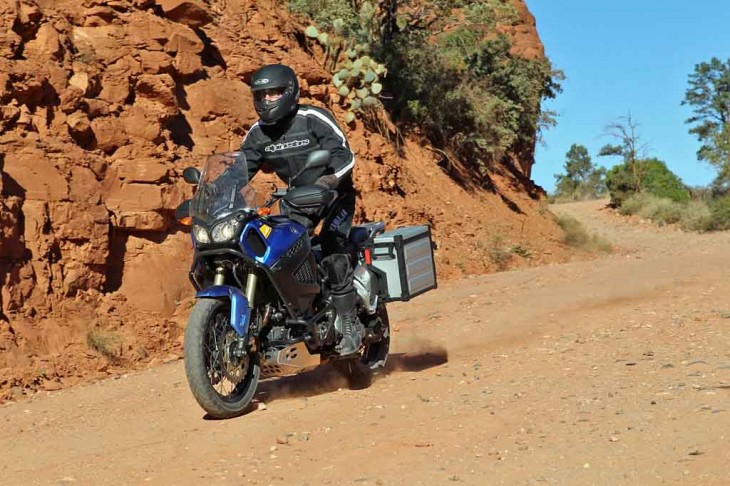
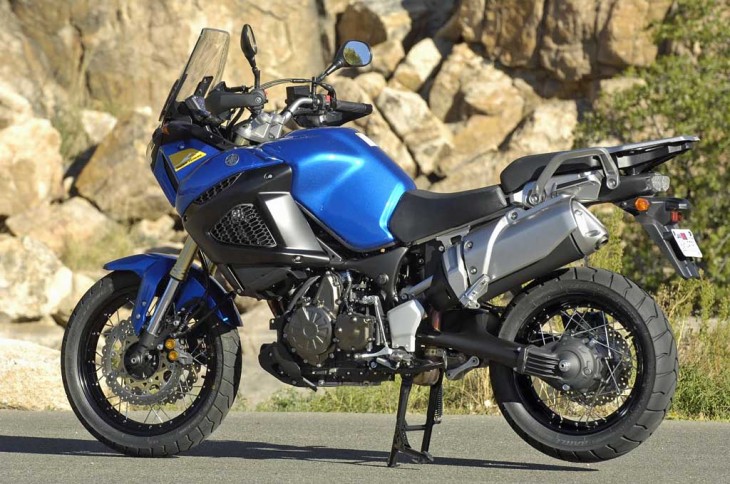
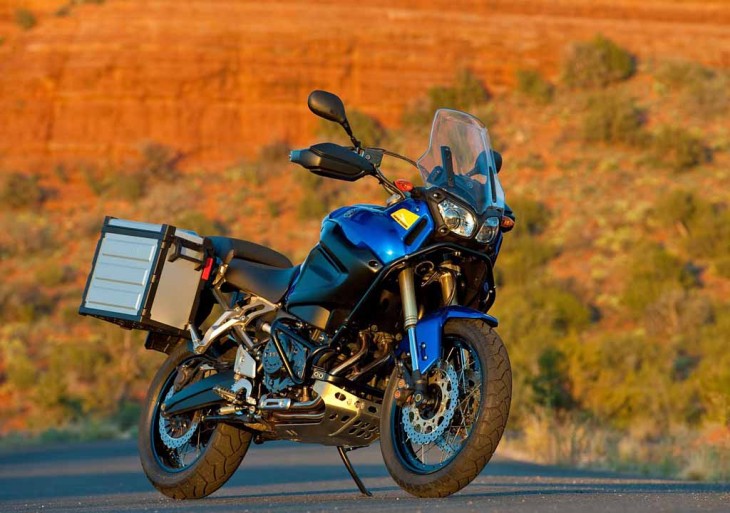
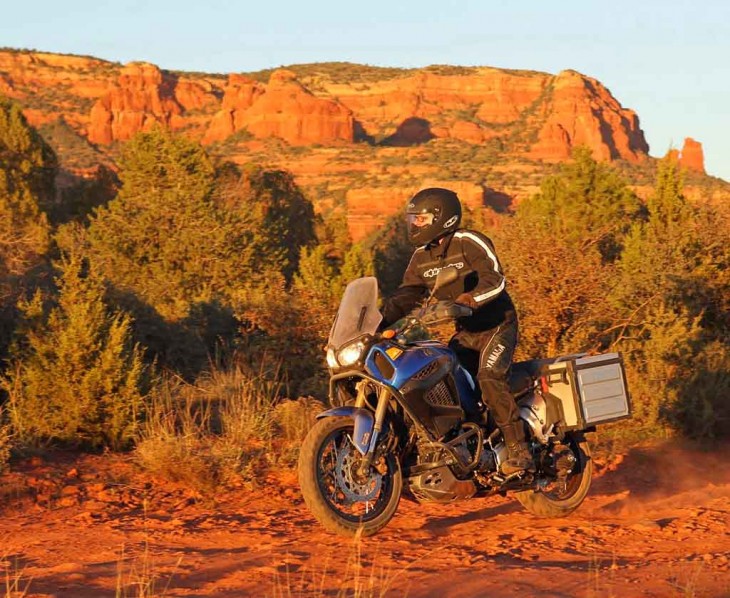

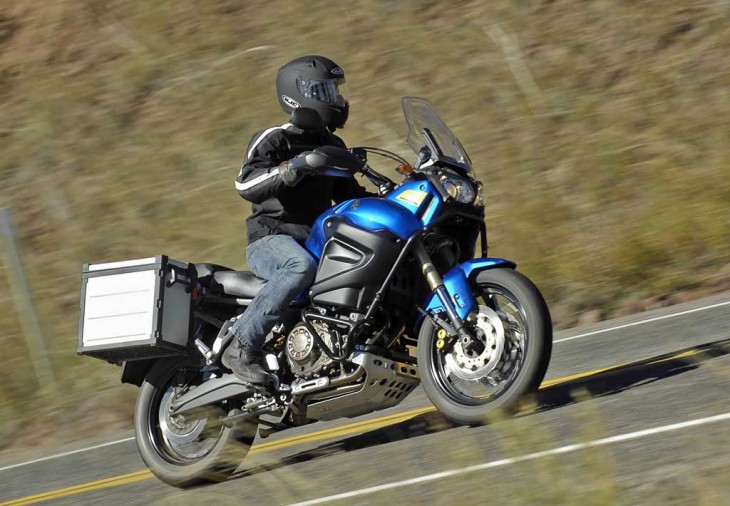


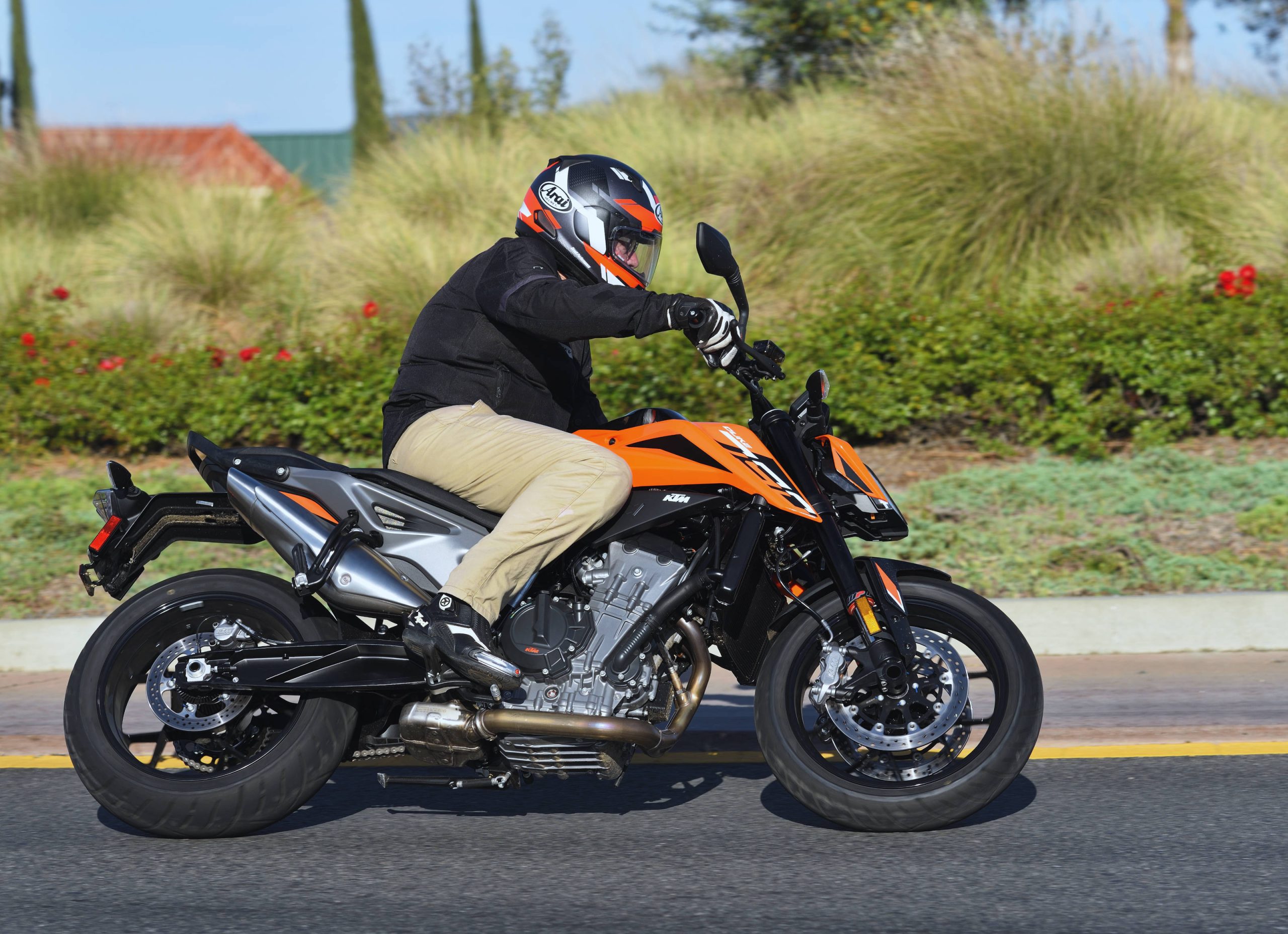
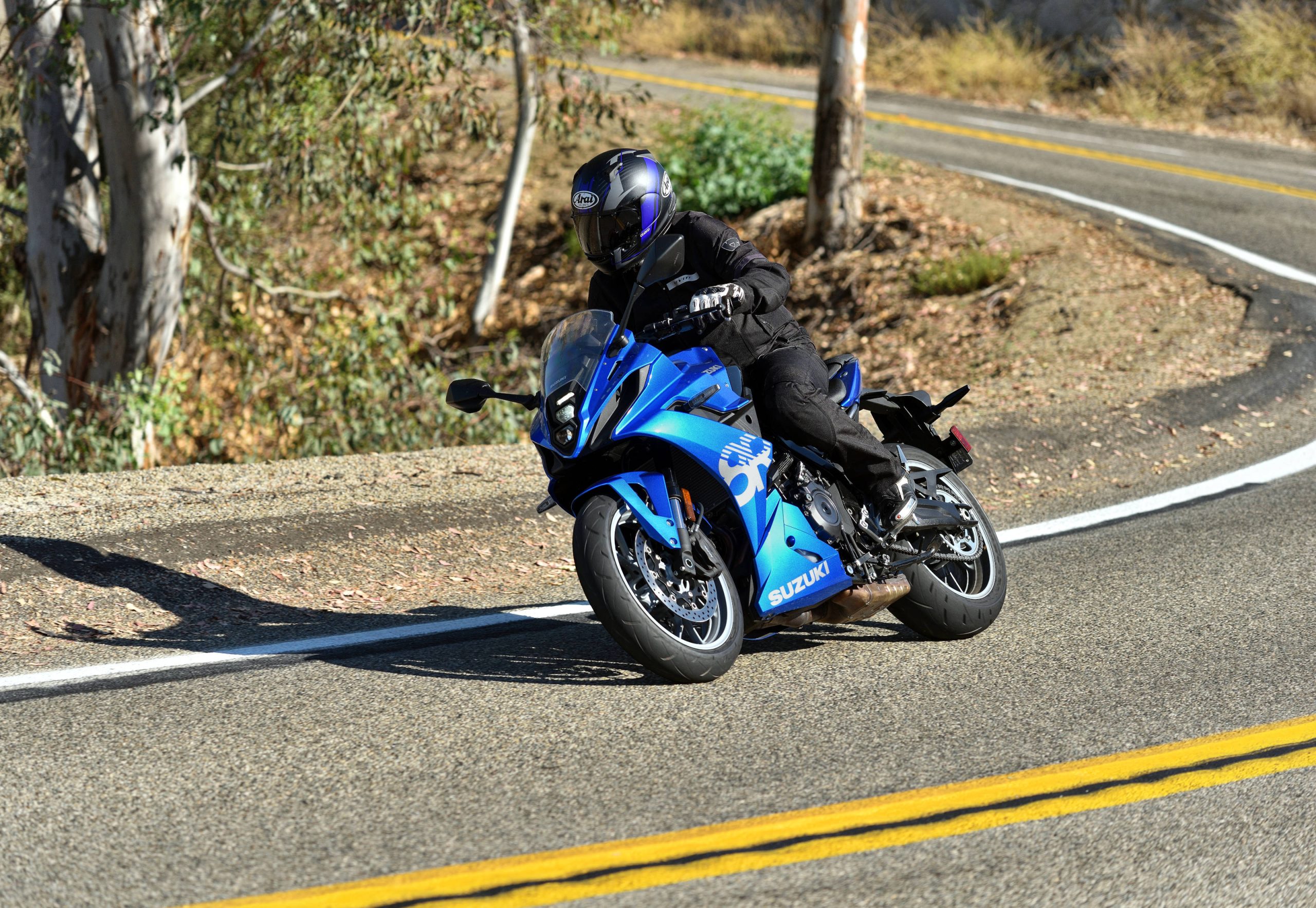
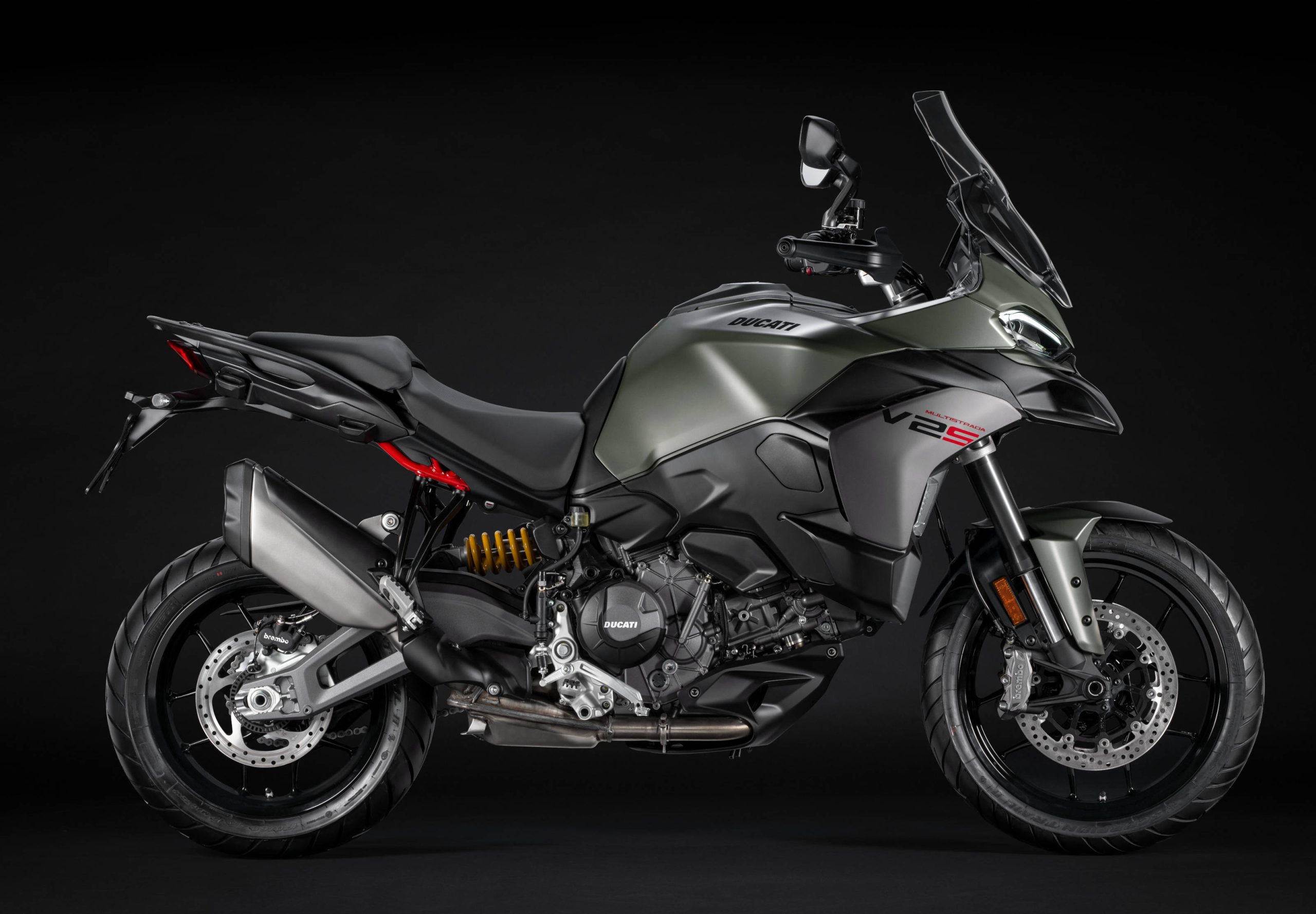
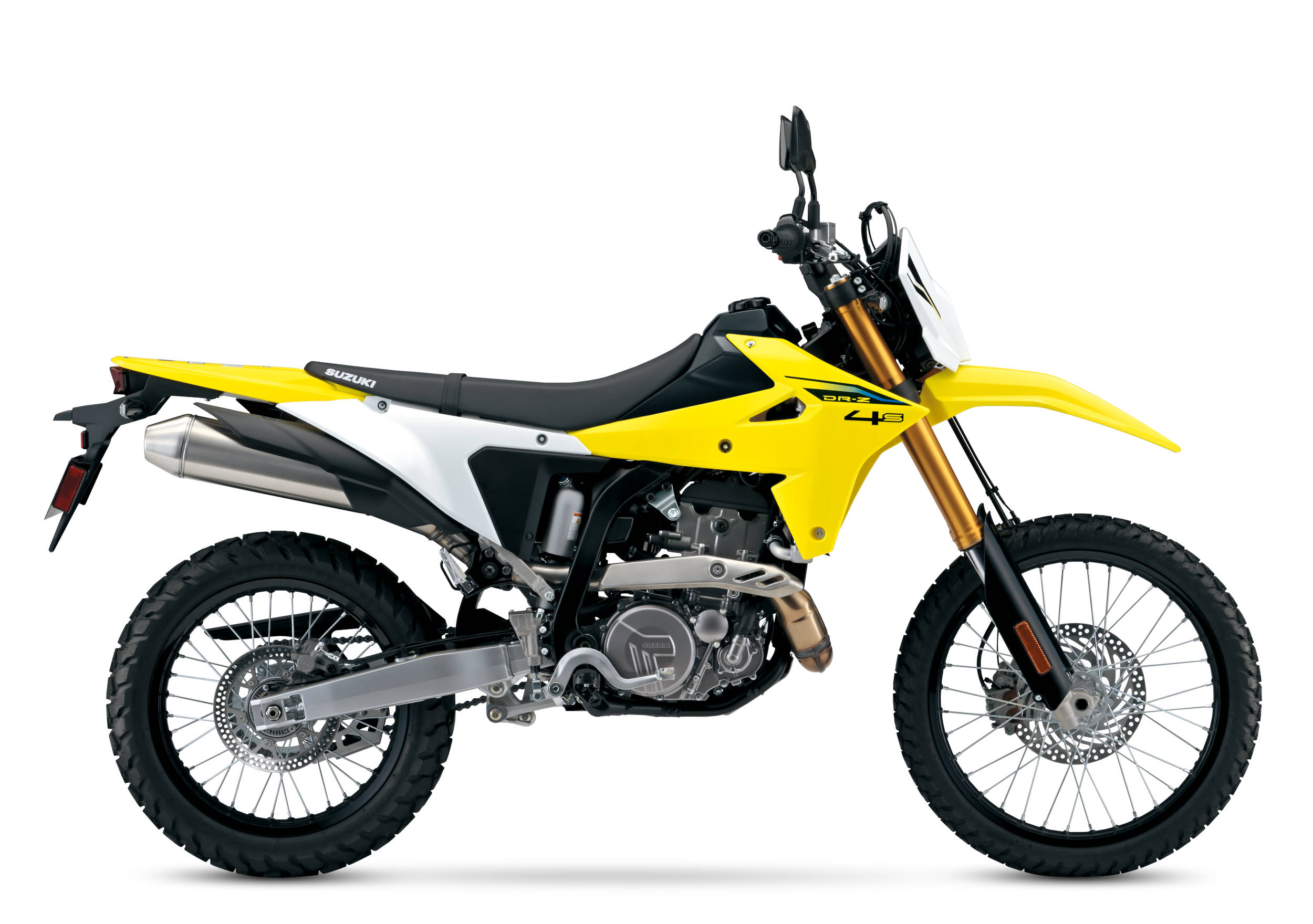
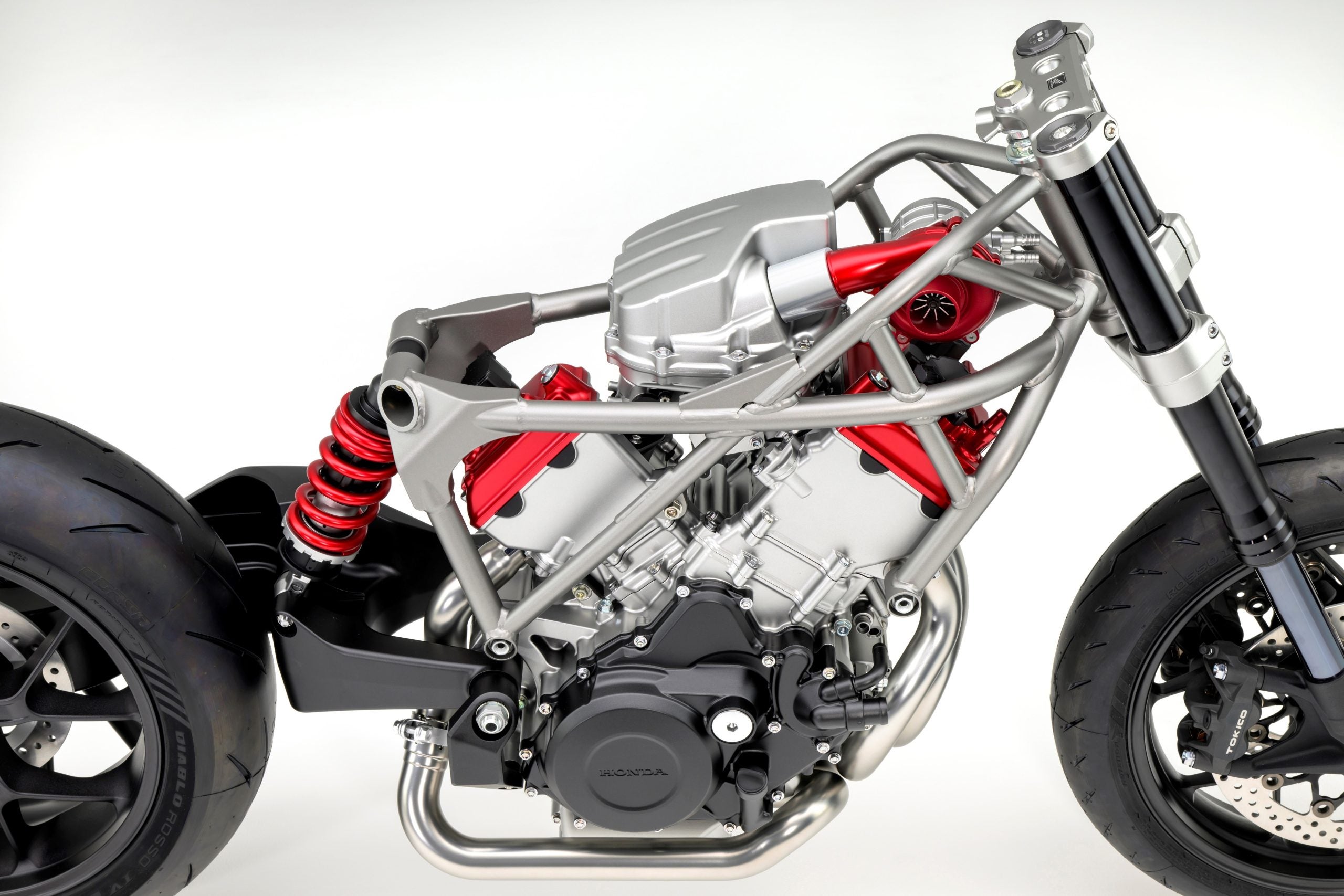
Jim, you Canadians are all the more lucky as you get the adventure bikes when we here in the states never really did. I`m planning on going to Canada to bring me a Varadero here to the states. I was hoping Honda might be bringing it here so as to rid their complete stock of them as I understand they intend to rid their stock of Varaderos by 2012.
You Americans are so lucky to get this bike at a very competitive price. I wonder how may $1000’s more it will be in Canada? No price yet on Yamaha Canada website. If it is too overpriced I will look into importing one from the USA.
Interesting to see the new S10 reviews emerging from the States and that some strongly positive reviews are appearing. The vast majority of European reviews this year have been negative towards the new S10, mainly criticizing the engine response as being flat, wheezy and boring. After studying the various discussion forums, real owner’s opinions (particularly from Australia and SA), and having personally owned a new S10 for two months now (Sweden) I think that many of these Euro reviews have over-done this point and/or in some cases have a hidden agenda (dependant on sponsorship money from BMW and therefore obliged to give this newcomer some heavy criticism). Looking forward to seeing more -*honest*- reviews from the States..
My own findings…The new S10 has superb suspension, brakes, amazing comfort, high speed stability (very planted at 180km/h and still feeling good at 200 km/h), very nice low-end torque and great roll-on in 5th and 6th at highway speeds and beyond. Almost perfect for the majority of driving situations and definately a very compitent tourer. For driving involving hard acceleration, I do however concur with the Euro reviews in so far as the engine can feel flat in 2nd to 4th from 4500 to 5500 r.p.m., especially when 2-up. The S10 is power limited in 1st to 4th and has a torque dip at 4500 r.p.m. At-least this is the case in Europe to get the bike compliant with latest noise emission regulations. But, I think this point is strongly over-emphasized as a negative factor in some of the Euro reviews. Overall the new S10 is great alternative to the R1200GS, especially for those who do not want to buy a BMW for whatever reason, financial or otherwise… I am personally very happy to see new alternatives to BMW beginning to emerge. All for the greater good…
One comment to the review, that there is “very little difference between S & T modes”. I cannot agree with that. In T mode the S10 is very smooth and sedate and in my mind makes driving in busy, build-up areas more manageable and less tiring. T-mode is also a good option when carrying a pillion by enforcing restraint. S-mode is a complete transformation.
I`m just glad and thankful to Yamaha for bringing the Super 10 here to the states. It would be great if Honda did the same with the XL1000 Varadero.
Interesting show….Long Way Round. Two guys riding around the world on BMWs, a REAL adventure. I know, I know, bikes were donated but would you attempt this trip on any other bike aside from maybe a KTM Adventure? I wouldn’t. I’ve had a BMW GS and Suzuki V-Strom 1K. No comparison. BMW can go almost anywhere, limited mostly by the sanity (or lack thereof) of the rider. V-Strom, with upgraded brakes a great street bike, don’t take it off road. Just my 2 cents. The Yamaha Super T is very interesting. Would love to catch a ride on one.
Do you know how many tracks assisted those 2 bikes during the trip and how many parts they replace?
I would be much more interested in 400cc and 600cc versions – without all of the electronica and shaft drive.
They are already out there: the Suzuki DRZ450S and the Kawasaki KLR 650.
It has spokes.
Spokes loosen. Need periodic tightening.
Can turn into big runout and wheel replacement.
Even if they only need the periodic tightening, that
is still too much hassle. Adventure riders want
no such adventure.
Cast wheels require no maintenance.
Vstrom.
Spoke wheels will flex and go back into shape if they hit a rock or a rut. Cast wheels will dent or crack under similar trauma.
There is method to their madness,
Bollocks. ’06 BMW GS – with spoke wheels. 45,000 miles. No spokes loose so far. Lots of offroad, no damage. I would not care to have had cast rims on some of the rides I’ve been on.
AT LEAST THE YAMAHA LOOKS GOOD FOR AN ADVENTURE BIKE. SEE THE NEW HONDA WANNABE ADVENTURE?? FUGLIEST THING AROUND. STILL THE ONLY REAL “SPORT” ADVENTURE THAT CAN DO IT ALL IS THE KTM.
In the contrary, KTM is the last of the touring bikes. It has the longest wheelbase with 21 inch front wheel which makes them hard on twisty roads though many are saying the opposite cos they are slow as riders. It is not as agile as it should be and it is very hard to ride on long distance with no electronics at all to make riders life easy.
If you need all the electronics to make your life easy your skills are lacking. The KTM is eight years old now and still is the best bike for the dirt. The rest are just poser adventure bikes. If you want a touring bike buy a goldwing. Have you ridden a KTM?
Hi Chris nice to hear your opinion, below are my comments on your suggestion.
I did all levels of California Superbike School for some years now and Enduro schools (this for my skills). To name a few of my motorbikes I owned Honda CB1100, 2xHayabusa, ZX636, ZX10R, 2xHonda XR, 2xKawa KX, VStomDL1000 and so on… (this for my Bikes). Now I own a Super Tenere and I’m expecting the New ZX10R plus my KX250. You get the picture?
I did many long trips in Europe and I’m a committed petrolhead.
Try my facebook they are all there.
I tested almost any kind of bike on earth including many models of BMW which I dislike as WELL overpriced for their quality and KTM which I dislike as VERY prompt to faults and overpriced like Ducati.
I fully agree with Roy plus T mode is for city, fuel saving and relaxing riding.
Really!! 21″ slows it down. Maybe the 950/990 ADV will not hang with a R1 or 1198 or similar bikes, but these things rip and handle quite well for a large adventure. Maybe I am old school but what electronics that make a riders life easy are later the ones that cause problems on the road. Simple is better for travelling without issues.
Too much technology for what it is. I would rather have them dump all the techie stuff and drop the price $4000. I (and many, many others) would then become potential customers. Too much money for a pretend dirtbike/tourer.
In this case it is best to buy a Varadero or a Vstom. Technology is going forward not backwards. Super Tenere is a global Tourer. You go everywhere any weather any surface for days, loaded with all your stuff.
Pretend dirtbike/tourer?
Did you try her?, then shut up!
“These engine settings can be switched on the fly by releasing the throttle and hitting a thumb switch located on the right handle bar control pod. That said, there doesn’t seem to be a very noticeable difference between the two settings, and I ended up using S-Mode about 85 percent of the time.”
Not much difference between the settings means your “techie” money is wasted as it makes no noticeable difference, except in your wallet.
I have had mine for 5 months now and it is a superb bike. A lot better than the 09 GSA I had berfore it. Why ? because it is so much easier to ride and the ABS/TCS make the BMWs seem neanderthal, both on and off road.
As for the servicing. I did the first service myself for the cost of oil and filter in about 45 minutes. I will do the next 3 as well. It will only go for a servive at 24k miles for the valves to be checked. There is no sign on the dash saying – “take me to a dealer for an (expensive) service”.
These throttle response settings are another silly fad. T-Mode, which would be useful under wet conditions, or S-Mode, which gives you throttle response that is a little zestier. If a person cannot jump on a bike and ride it confidently using their right hand on the twistgrip to assure their safety then in my humble opinion you should probably not get on the bloody bike.
The Ducati 1198 seems to have alot of get up and go when you grab a handful of throttle so…. Be bloody careful! These electronic gadgets do promote laziness and do not give a rider the chance to use the fundamental skills of riding. Oh, it’s wet and dangerous so I better ride in slightly damp going to Tesco’s mode! Just get rid of all the bullshit and sell a good bike! The exhausts got ugly because of Mass Centralization. It was Buells idea. looks ugly but the japs caught on and made everything ugly!
Why a my so CRABBY today ? LMAO. Must be the Weather. Just pulling your cords man, don’t bite my head off now, lol.
I’m probably the only one who would have preferred to see a chain drive so this thing could be geared down a bit. How about a comparo of this and the V-Strom, the BMW is out of my price range and interest level. My current V-Strom is worn out at 135K, so this would be timely.
If you want bike under 800 lb with electronic cruise, you still have to buy a BMW!
Not Cool (-_- )’…is like Cruise Controls are made of unobtanium or something…how much would it cost an OEM to sell it as an option on any medium to large rig? It can be a gazillion dollars specially if u implement it through out your whole bike line.
I’m very, very happy to see this bike coming to the USA. For those of us who ride on road, this bike is an excellent alternative to a Multistrada or Tiger. The Tiger 800 and Versys/V-strom will compete to a much smaller degree I think. The price is amazing considering how much a new FJR1300 costs, and when you compare the tech on both bikes, plus the fact that the FJR hasn’t been changed at all since 2006, the Tenere becomes even more impressive. No, it’s not perfect and I think not being able to disable the ABS system off road is a mistake (althought I don’t ride off road so I can’t really comment). All I can say is that after watching the Euro group get the best bikes fo rthe last 10 years, I’m glad we are starting to get a decent selection of these bikes in the USA. I hope Yamaha sells a ton of these things.
+1.
What does your “1” mean?
It means i agree with his view-opinion(s) on the matter at hand.
Not being able to switch off the ABS could even make the bike dangerous under some off road conditions.
Is do-able…there’s no fancy switch like the GS1200 but u can turn it OFF.
Do a search on YouTube, there’s a video(s?) that guides u thru the process.
I like this bike, but whats the deal with these monstrosities of mufflers on bikes these days. Do the manufacturers have investments in the aftermarket guys?
No, they’re carrying cats inside to clean the air you breath.
Be glad u would only have to replace ONLY one can and not 2 like on a DL1000…or in my case on a SV1000N.
I’ve got 49,000 on my R100GS. No transmission or drive shaft explosions yet.
I own a Super Ten and it is hard for me to understand the comparison of a Vstrom 650 or Tenere 660 with this bike. For the record my previous bike was a Vstrom 1000 for 5 years. If money is the problem then there is no argument on this. But Super Ten is unbelievably capable bike, off and on road. On my S/T the footpegs have long gone and I partially replaced my KX 250 gravel excursion with the S/T. Trust me I do motocross, Superbike and long distance trips this bike is what somebody may request for travelling the world. I measure the weigh of Super Tenere with the GS Adventure and the GS is heavier!
Nice to hear from a “REAL OWNER”.
Another near hit. This fine motorcycle should have an inline 4 of 1200cc and an option for machined wheels instead of wire. It warms the heart to see the footpegs in the right place.
I don’t like foot pegs situated to cause my “package” to the main component of shock absorption.
Cast-Machined wheels im with u(Guzzi just did that now with the Base Model 2011 Norge, No leaky spoke nuts and no more tire and tube R&R, nothing but a hassle). Spoked wheels remain standard on the NTX Model tho for those spoke lovers.
1200 I4? That’s probably overkill for this bike’s intended use and abuse and more little wear parts to be on top of adjusting(8 more valve shims comes to mind first, 2 more TBs to synch, etc) and i think it would be too wide to boot.
90K+ on my ’05 V-Strom 1000 with extremely low maintenance costs. Did lots of dirt on my Alaska trip, and occassionally play around the dirt on the central coast of CA. I think the new Yamaha will be a little better just based on the read and the specs. If I were doing another big duelie again, I’d seriously consider the Yamaha, and definitely the Yamaha over the big BMW GS… Personally though, my tendencies are more all road sport touring these days, so the new Multistrada 1200 and Tiger 1050 appeal more to me… The VFR is a little to limited for some roads I seek out. Most are paved, but several are quite rough.
No comment on the shaft drive? I for one am always happy to see non-chain bikes. Chains make sense for supersports and dirtbikes but not much else.
But chain drive allows the rider to change gearing quite easily, and also is easily repaired. Shaft drive is for cruisers only.
Change gearing? Yeah, lets make the bike with chain and sprocketts for the .0001% who even THINK about doing such a thing.
I know, I know, “It’s nice to know that you could if you wanted to”. Sheesh!
gimme a 660 Tenere anyday.
I’m with you there. I know the spec sheets show very little difference between the 660 and a KLR as far as weight and horsepower but I’d like to throw a leg over that Tenere anyway. Besides, as a wise man once said, “You can’t ride a spec sheet.”
3 years of drought…a raft of new “rider’s bikes”. God time to be alive, man, which one do I choose?!
Indeed, I would like to own someday the Blue Elephant pictured above (as a touring rig).
It will be interesting to see which sells more: the new VFR or the Super Tenere. Comparably priced and bets in opposite directions.
Or the Tiger 800’s. My bet is on the Tiger.
Those who do (or might do) dirt will take the Yamaha, all-streeters will have the Honda.
Remember that an overwhelming percentage of these bikes seldom, if ever, see dirt. It’s a style that has caught on with street riders who fancy themselves as adventurers.
Indeed, ad me to the club if/when i buy one of these someday. I would like to try the Dirt tho just for fun and giggless and see what is all about the hoopla-doopla…unfortunately, i don’t have any FREE open off-road trails(that i know off near me) to venture off.
Of course it’s anecdotal, the bike is new to the US. It doesn’t seem that any of the people on advrider who have been riding the things for almost a year have reported any chronic issues and very few issues at all. My experience with Yamahas, on road and off, has been stellar, they seem to be a very well engineered and reliable brand. I have one of these on order and am excited to get it and then get lost. 🙂
about the ABS:
1-put the bike on the central stand
2-engine on
3-put first gear
4-accelerate al little bit
–> the abs warning light will blink –> the bike is detecting an excessive difference in speed between front and rear wheel spin and interprets it as possible malfunction in the abs sensor. To avoid breakdowns it simply turns off the ABS for the back wheel, so you now have the bike with usefull front ABS and usefull rear blockable wheel.
Every “adventure” bike that comes out makes me love my Vstrom 650 even more. Nothing great but everything good. Zero miles with a new comfy seat and hard bags for well under $10,000 is hard to beat. And I love the v-twin.
i agree, viva la V-strom
“relatively inexpensive service costs, and great Japanese reliability”
Is this purely anecdotal or do you have the facts to back it up? Its just that my experience, especially with adventure bikes has been the opposite.
My ’00 R1150GS hummed like a bird for 37k miles.
…right up to when the transmission exploded.
Do birds hum?
OK everyone, I just realized that HUMMINGBIRDS hum, so no corrections please.